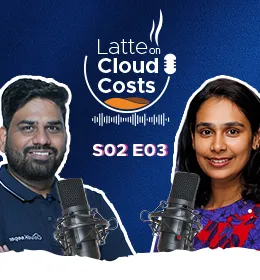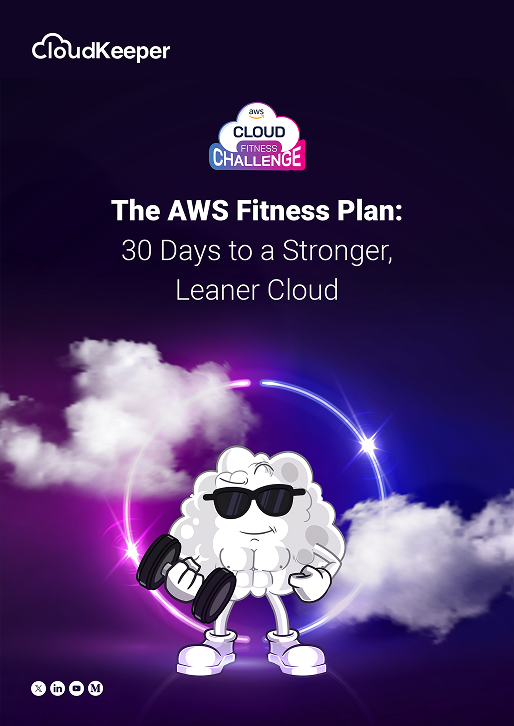In the latest episode of "Latte on Cloud Costs," host Praneet Chandra sits down with Varsha Sundar, Vice President of Global Cloud FinOps at Chubb, to explore the evolving landscape of cloud cost optimization. With over 10 AWS certifications and her role as a FinOps Foundation North American Ambassador, Varsha brings a wealth of experience from her journey that began as a research assistant at Columbia University and spans multiple enterprise environments.
The Evolution of Cloud Adoption: From Hype to Reality
Varsha outlines four key phases of cloud adoption:
Phase 1: Cloud First Mentality
Initially, organizations embraced a “cloud first” approach, moving workloads en masse to the cloud with the assumption it would be more cost-effective. This often resulted in straightforward lift-and-shift migrations without much architectural rethinking.
Phase 2: The Reality Check
It soon became clear that simply migrating on-premise workloads didn’t always deliver cost savings. Companies started realizing they were spending more in the cloud and began considering cloud-native or optimized architectures.
Phase 3: Strategic Cloud Evaluation
As cloud maturity grew, organizations began evaluating which workloads actually benefited from being in the cloud. Instead of blindly migrating everything, they assessed the cloud-worthiness of each application.
Phase 4: AI Integration
Today, cloud strategy includes evaluating how AI can be embedded into cloud operations. This includes understanding AI-friendliness of workloads and exploring how AI can assist with automation and decision-making.
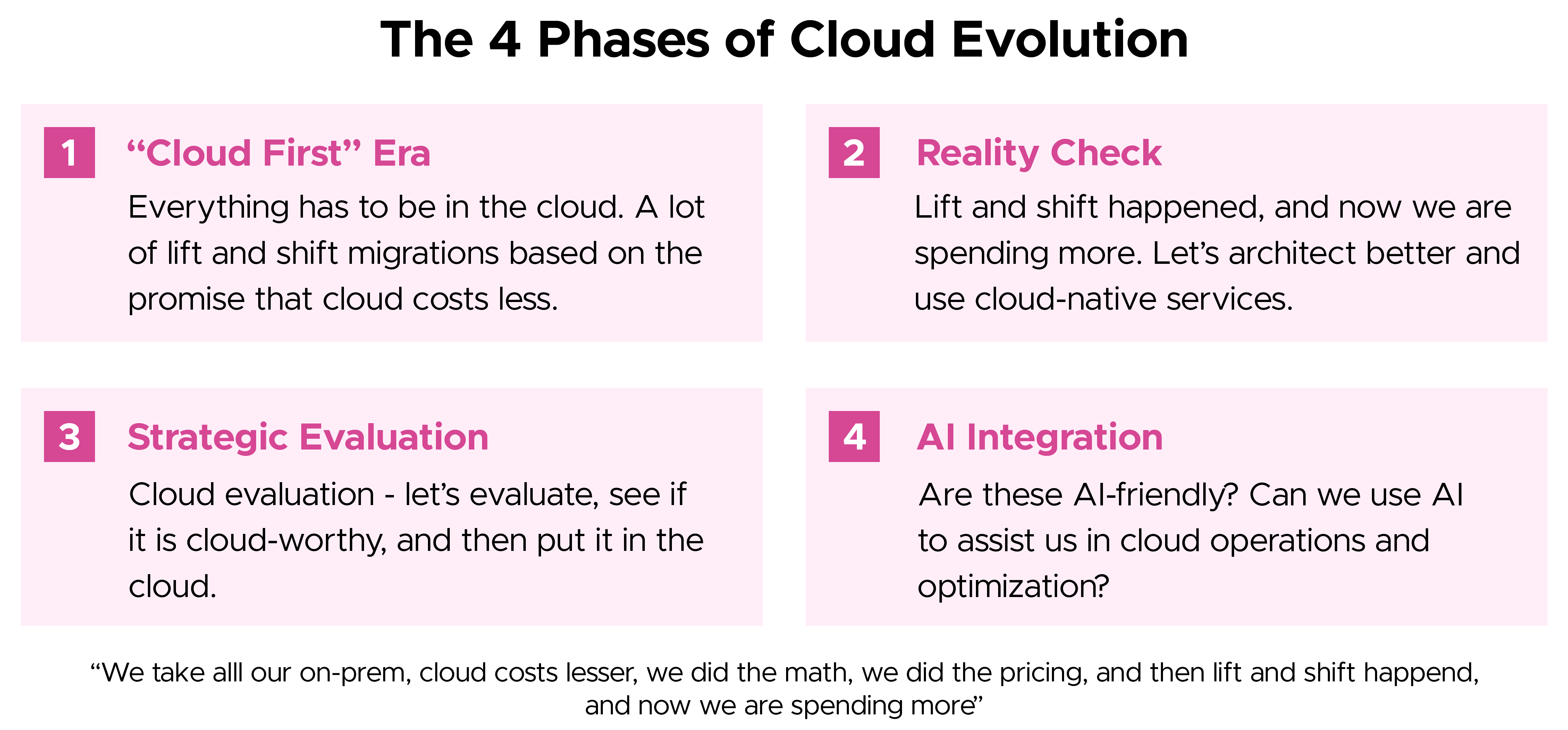
The Hidden Costs of Cloud Migration
One of the most overlooked aspects of cloud migration is the dual-cost period, where both on-premises and cloud environments run simultaneously to ensure uptime during transition. This leads to double spending.
Additional challenges include:
- Licensing Complexities: Issues like overlapping licenses for platforms like SQL Server.
- Disaster Recovery Duplication: Managing multiple DR sites during transition.
- Technical Debt: Legacy systems and certificates that delay progress.
- Timeline Pressure: The need to balance speed with cost control.
The MSP Decision Framework
Varsha emphasizes that whether to engage a Managed Service Provider (MSP) depends on organizational maturity:
- Small Enterprises: Often benefit from MSPs due to limited in-house expertise.
- Mid-size Organizations: May adopt a hybrid approach, using cloud-native tools and MSPs selectively.
- Large Enterprises: Require coordinated efforts across multiple business units and often need both internal and external support.
She also notes that time itself is a cost metric. Delays and inefficiencies carry an operational cost that must be considered alongside financial spend.
Beyond Dashboards: The Future of Cloud Cost Visibility
Traditional dashboards are often not enough. Varsha stresses the importance of tailoring visibility to user personas and ensuring data quality.
Three Core Issues:
- Data Quality: Insights are only as good as the data behind them.
- Proper Attribution: Different teams need customized views aligned with their responsibilities.
- Chargeback Complexity: Linking cloud resources to the correct cost centers remains a major hurdle.
The AI Opportunity
Looking ahead, AI has the potential to revolutionize cost visibility. Rather than navigating dashboards, users could simply ask for EC2 costs or compare pricing across regions. AI could surface personalized insights based on an organization’s SLAs, discounts, and sustainability goals—reducing reliance on manual queries and credentials.
Debunking Cloud Cost Optimization Myths
Varsha debunks three common myths:
Myth 1: "Our Data is Clean"
In reality, most organizations have unused or forgotten resources that quietly inflate cloud bills.
Myth 2: "It's Just About Cost"
Effective optimization involves leadership, governance, application ownership, finance, engineering, and security teams. Each plays a role in controlling cloud spend.
Myth 3: "It’s Someone Else’s Job"
Cost optimization is a shared responsibility. It isn’t just an engineering or finance issue—it requires cross-functional collaboration and accountability.
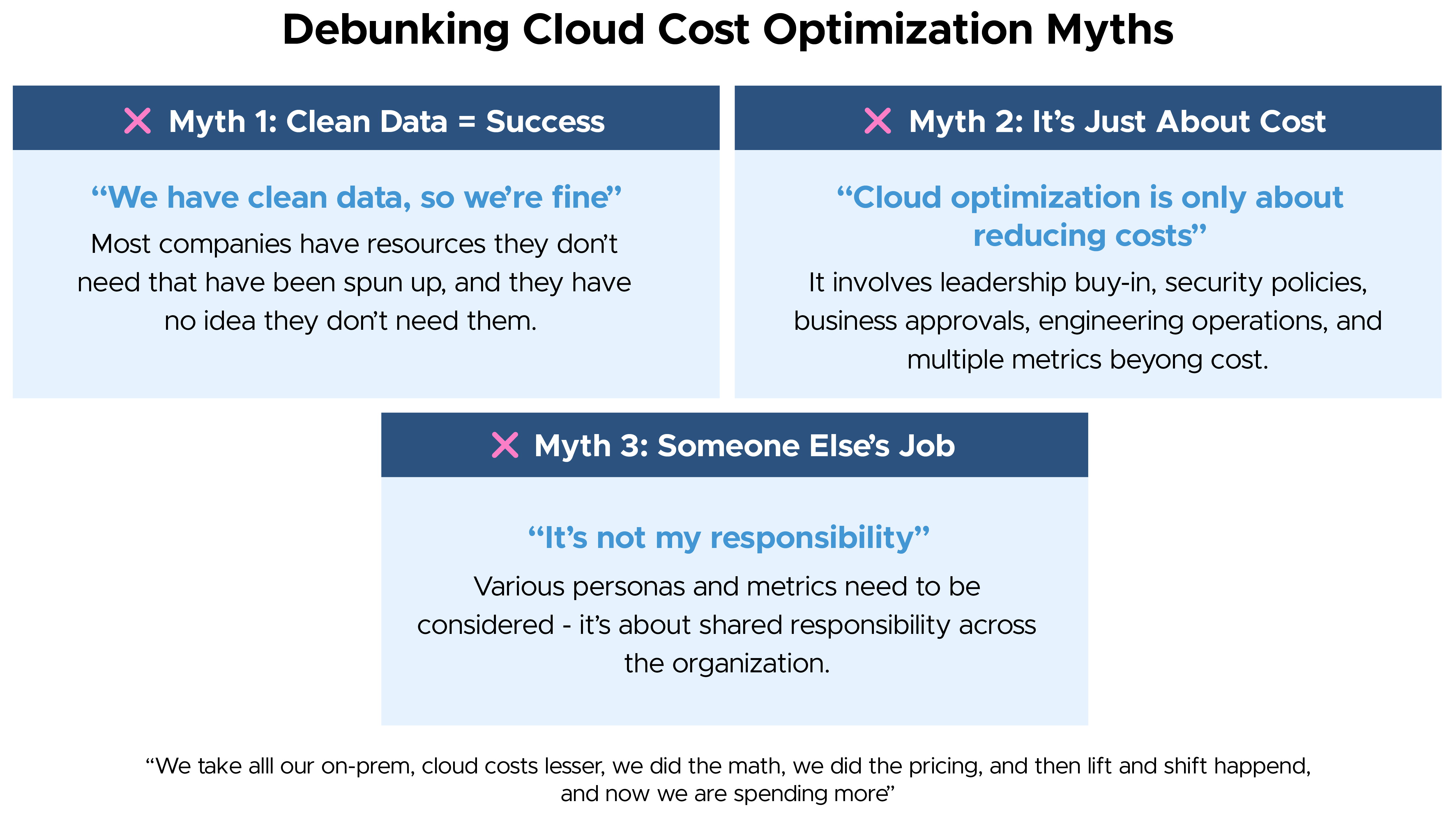
The Shared Responsibility Model
When asked about who should be the "first responder" to cloud cost problems, Varsha advocates for a shared responsibility approach: "everybody has to do their part, right? It's not like you pin it on one person."
CTOs: Must review projections regularly and balance modernization with budget constraints
Application Owners: Know their applications intimately and can optimize tags, dependencies, and disaster recovery
Finance: Provides regular monitoring and accountability
Engineers: Implement deployment best practices and parameter optimization
When everyone contributes, cost optimization becomes a natural part of the development lifecycle—not a separate burden.
Key Takeaways for Cloud Leaders
- Budget for Dual Infrastructure Periods: Plan for the reality of maintaining both on-premises and cloud environments during migrations.
- Evaluate MSP Needs Based on Organizational Maturity: Consider your technical depth, timeline constraints, and resource availability when deciding on external partnerships.
- Embrace AI for Cost Visibility: Move beyond static dashboards toward conversational, AI-powered cost intelligence that provides personalized, contextual insights.
- Address Misconceptions Head-On: Recognize that cloud cost optimization is a multi-faceted discipline involving multiple stakeholders and metrics beyond just cost reduction.
- Implement Shared Responsibility: Create accountability structures where every role has clear responsibilities for cost optimization within their domain.
- Focus on Multiple Metrics: Consider cost, efficiency, sustainability, time, and governance as interconnected elements of successful cloud management.
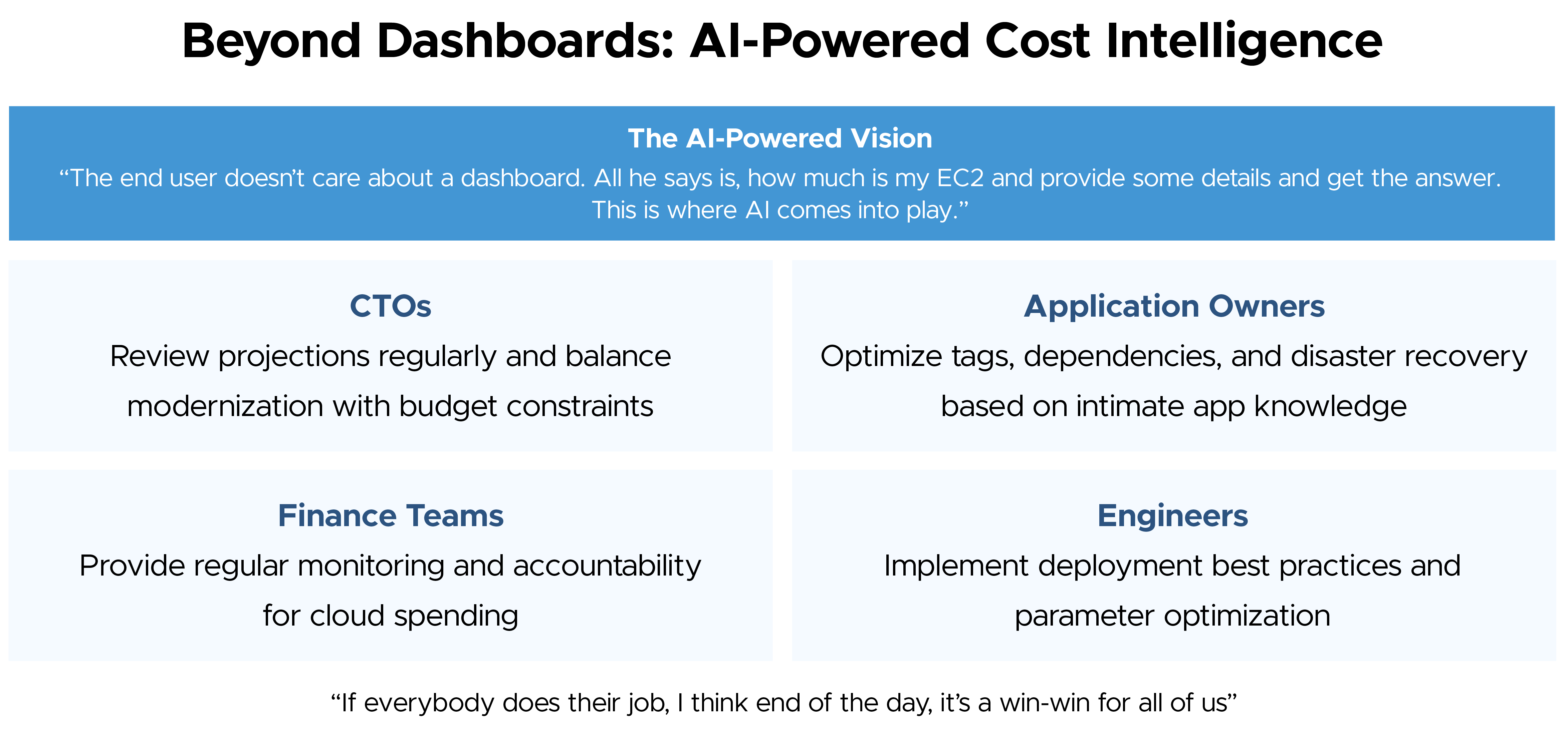
Looking Forward
Varsha's insights reveal an industry in transition from reactive cost management to proactive, AI-enhanced optimization. The future belongs to organizations that can combine technical expertise with cultural change, leveraging AI to make cost intelligence accessible to all stakeholders while maintaining rigorous governance and accountability.
As cloud environments become increasingly complex with AI workloads and multi-cloud architectures, the principles Varsha outlines—shared responsibility, comprehensive visibility, and strategic evaluation—will become even more critical for sustainable cloud operations.
The conversation reinforces that successful cloud cost optimization isn't about finding the perfect tool or dashboard—it's about building the right processes, culture, and technology foundation that evolves with your organization's needs.
Want to dive deeper into cloud cost optimization strategies? Connect with CloudKeeper to learn how we can help you implement these expert insights and build a sustainable, cost-effective cloud operation.
